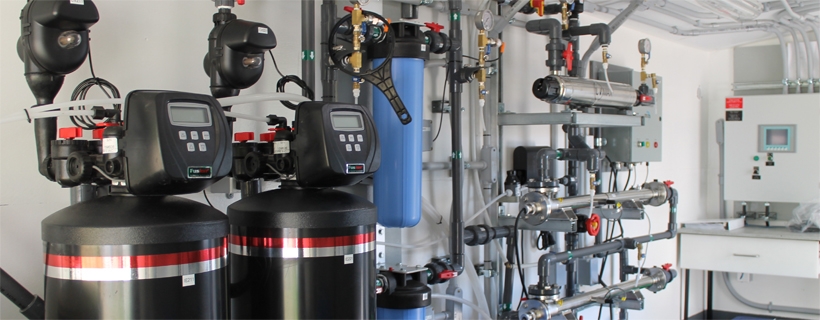The Vancouver Sun – Vancouver engineers aim to serve safe water to a thirsty world
A small city in India and a northern First Nations community in Canada would appear to have little in common.
According to Pierre Bérubé, a civil engineering professor at the University of B.C., they share at least one problem: poor-quality drinking water.
“It might seem weird that this is the case, but the challenges are similar,” Bérubé said.
The problem in both cases, he explains, is lack of sufficient and consistent electrical power (often because of unreliable access to diesel), and lack of specific local technical expertise required to run water purification systems.
Bérubé is working on a solution to these problems, along with UBC chemical and biological engineer Madjid Mohseni — and the new Canada-India research collaboration funding the project could open the door to expanded trade between the two nations.
Bérubé and Mohseni are operating under the auspices of India-Canada IMPACTS (IC-IMPACTS), a research collaboration that brings together researchers, industry innovators, community leaders, government agencies, and community organizations from across India and Canada to work on infrastructure, water quality, and public health.
In addition to educational and networking benefits, the joint venture could provide a boost to Canadian businesses — and offer opportunities to diversify away from commodities, the dominant trade between the two countries.
“Just on infrastructure alone, India is planning for about $1.1 trillion right now,” said Nemankur Banthia, Canada Research Chair in infrastructure rehabilitation and sustainability at UBC and CEO of IC-IMPACTS.
“Canada’s trade with India could grow by 10 times very quickly because it is a such a growing economy there,” he said.
Two of the major technologies at work worldwide in the treatment of drinking water are membrane technologies and ultraviolet oxidation processes. Bérubé is a recognized expert in the first, and Mohseni in the second.
For this project, they have decided to take a radical second look at both technologies.

“How can these technologies be stripped down,” they asked, “so they will be effective in remote areas of both Canada and India?”
Across the world, membranes are engineered to selectively remove pathogens (bacteria and viruses), and are generally used in expensive, large-scale water systems.
“These membranes require a lot of pressure, pumps, valves, and control systems to operate them,” says Bérubé. “For example, West Vancouver very efficiently provides water for all of West Van this way, but if you visited that plant, you would see that it would be pretty hard to build this in a northern community or in rural India.”
He said he and his students have managed to strip down a membrane system so that it needs none of the usual hardware and control systems, but works by gravity.
“Instead of using chemistry to achieve a lot of the processes required, we use biology, micro-organisms, to keep the membrane clean. Usually that is done with chemicals and liquid flow.”
The result? A simple process that can run on small amounts of power.
Bérubé’s simplified membrane system is almost ready for testing in the town of Faridkot in the Punjab in India, and in a First Nations community in Canada.
Mohseni is taking the same approach to ultraviolet oxidation systems. UV light has long been known to kill pathogens but its use has been superseded until recently by chlorine. Now, many large cities such as Vancouver and Seattle are using UV light on a large scale, and UV light kits are available at the hardware store to disinfect tap water.
But until recently UV oxidation has not been able to deal with organic pollution, which occurs largely in agricultural areas. Mohseni’s new UV lamp will kill bacteria and remove organics with the same unit. And it is cheap and easy to use.
“A lay person with limited technical expertise is capable of running this system,” says Mohseni.
He says he and his team have their mini-UV oxidation unit built, and they have been working with a First Nations community in north-central B.C. where it was scheduled to be installed for testing this summer. A similar unit will be tested in India next year.
For each of these projects, in addition to Mohseni and Bérubé, there will be other universities, graduate students, companies large and small, and local governments involved in funding, research, planning, construction, installation, and monitoring.
Projects under IC-IMPACTS require this kind of collaboration, and there has to be a strong potential for business application.
“For this proposal to be accepted,” says Bérubé, “there had to be a component of field trials within two years of the start, for the intent of commercialization.”
Banthia is himself involved directly in an IC-IMPACTS project. He’s part of a binational team working on developing new kinds of thin pavement, trying to increase its longevity and cost, for village roads in India. And he’s involved in a joint Canada-India project to improve the monitoring of old buildings and bridges using embedded sensors that are connected to the Internet.
According to B.C.’s new Ministry of International Trade, India is the seventh highest destination for B.C. exports. The top exports to India in 2013 were mineral products, wood products, pulp, and machinery and equipment.
“Our trade traditionally has been predominantly in commodities,” says Banthia. “With IC-IMPACTS we are changing that to an economy that thrives on cutting-edge (and value-added) products and services. Move to a real knowledge-based economy from a ‘pump and sell’ economy.”
 “How can these technologies be stripped down,” they asked, “so they will be effective in remote areas of both Canada and India?”
“How can these technologies be stripped down,” they asked, “so they will be effective in remote areas of both Canada and India?”